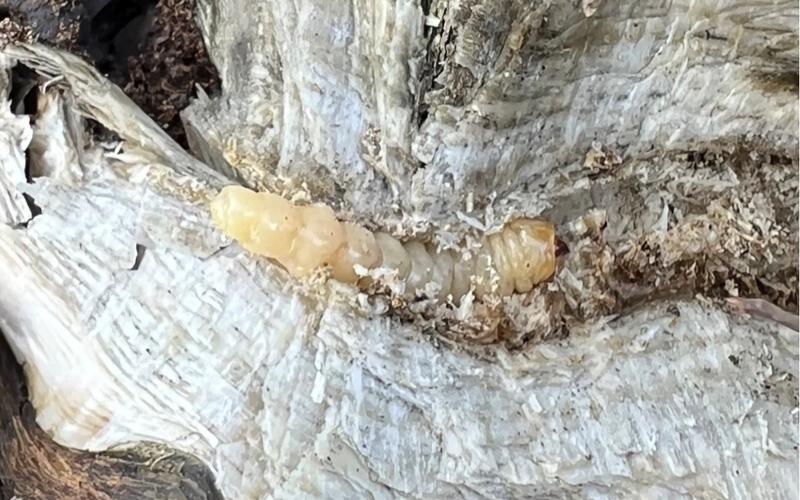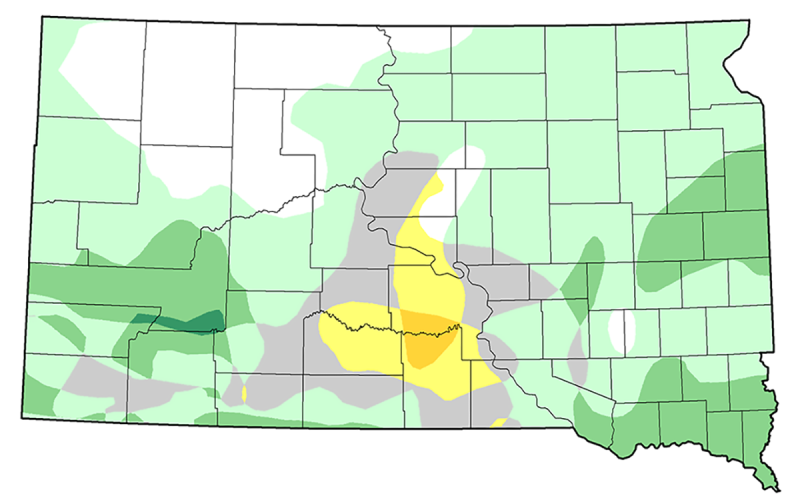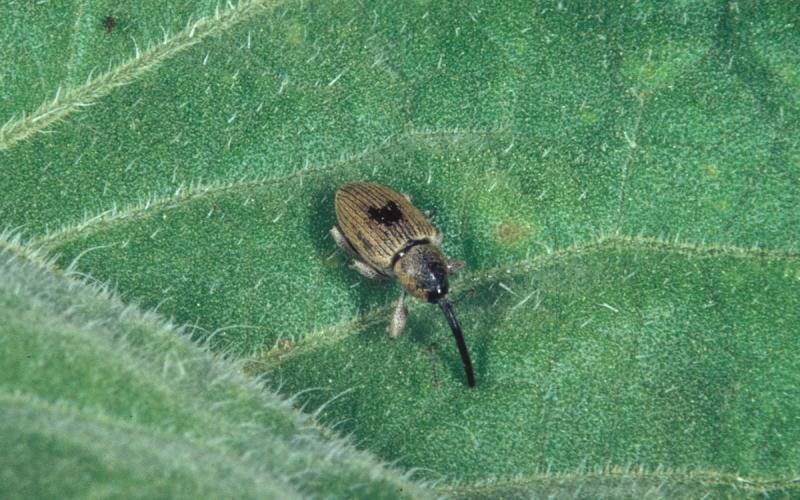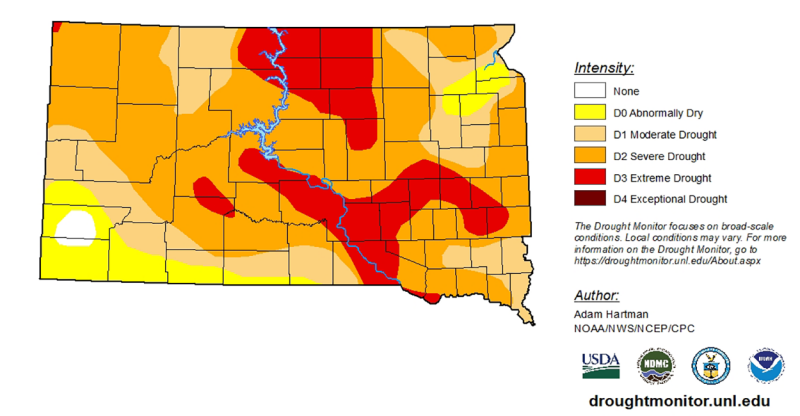
Written collaboratively by Patrick Wagner, Philip Rozeboom, Adam Varenhorst and Aaron Hargens.
Originally Submitted: July 15, 2021
Grasslands in South Dakota will continue to dry down as we progress through the summer months. However, this normal trend has been accelerated by the ongoing drought conditions across much of the state (Figure 1). With their grassland food sources being depleted earlier than usual, grasshoppers are moving into nearby crops in search of green vegetation. In parts of western South Dakota, grasshopper nymphs have already been observed in sunflower fields feeding on the young plants (Figure 2). These grasshopper populations will be a rising concern as they develop into adults and their appetites increase. Therefore, it is important to begin monitoring sunflower fields now to ensure that grasshopper populations do not reduce yields.
Scouting
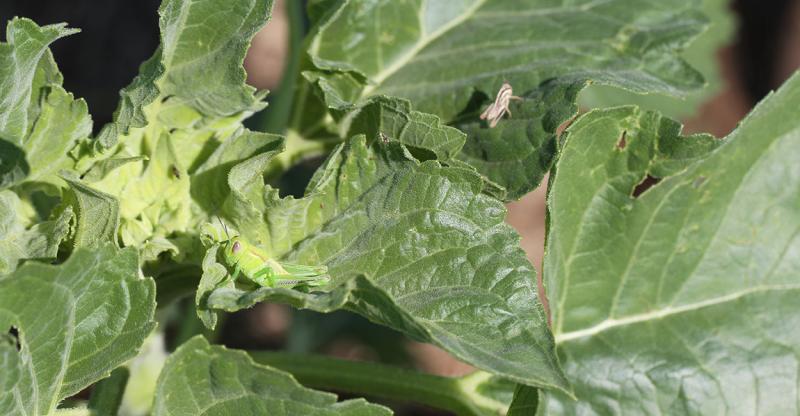
The best way to scout for grasshoppers in sunflower is to visually estimate the number of grasshoppers present in one square yard and repeat the process for several areas of the field. Field margins can be scouted using a sweep net. Thirty to 45 nymphs or eight to 14 adults warrant an insecticide application to reduce the populations. Defoliation estimates can also be used to determine if treatment is necessary. For sunflower, Table 1 contains the estimated yield loss associated with the percent defoliation for different sunflower growth stages. During the R1–R5 stages, treatment should be considered at an average of 20% defoliation throughout the field. If grasshoppers are observed feeding on the sunflower heads later in the season, populations are likely above threshold (Figure 3). This type of feeding will greatly reduce sunflower yield.
|
|
||||||||||
|---|---|---|---|---|---|---|---|---|---|---|
|
|
|
|
|
|
|
|
|
|
|
|
| Growth Stage |
|
|||||||||
| V4 to V5 |
|
|
|
|
|
|
|
|
|
|
| V9 to V11 |
|
|
|
|
|
|
|
|
|
|
| R1 |
|
|
|
|
|
|
|
|
|
|
| R3 |
|
|
|
|
|
|
|
|
|
|
| R5 |
|
|
|
|
|
|
|
|
|
|
| R7 |
|
|
|
|
|
|
|
|
|
|
| R8 |
|
|
|
|
|
|
|
|
|
|
Table adapted from North Dakota State University Extension Bulletin 25.
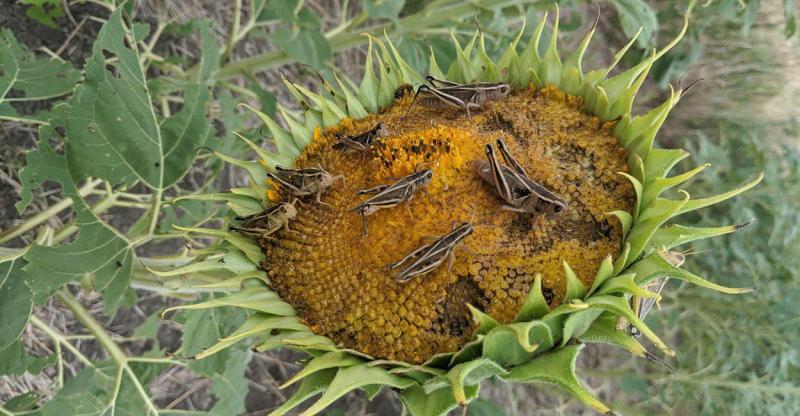
Management
When applying insecticides to manage grasshopper populations, we recommend using the highest labeled rate for the selected products (especially when managing the adults). For a list of products available for treating sunflower, review the latest edition of the South Dakota Pest Management Guide: Alfalfa and Oilseeds.
